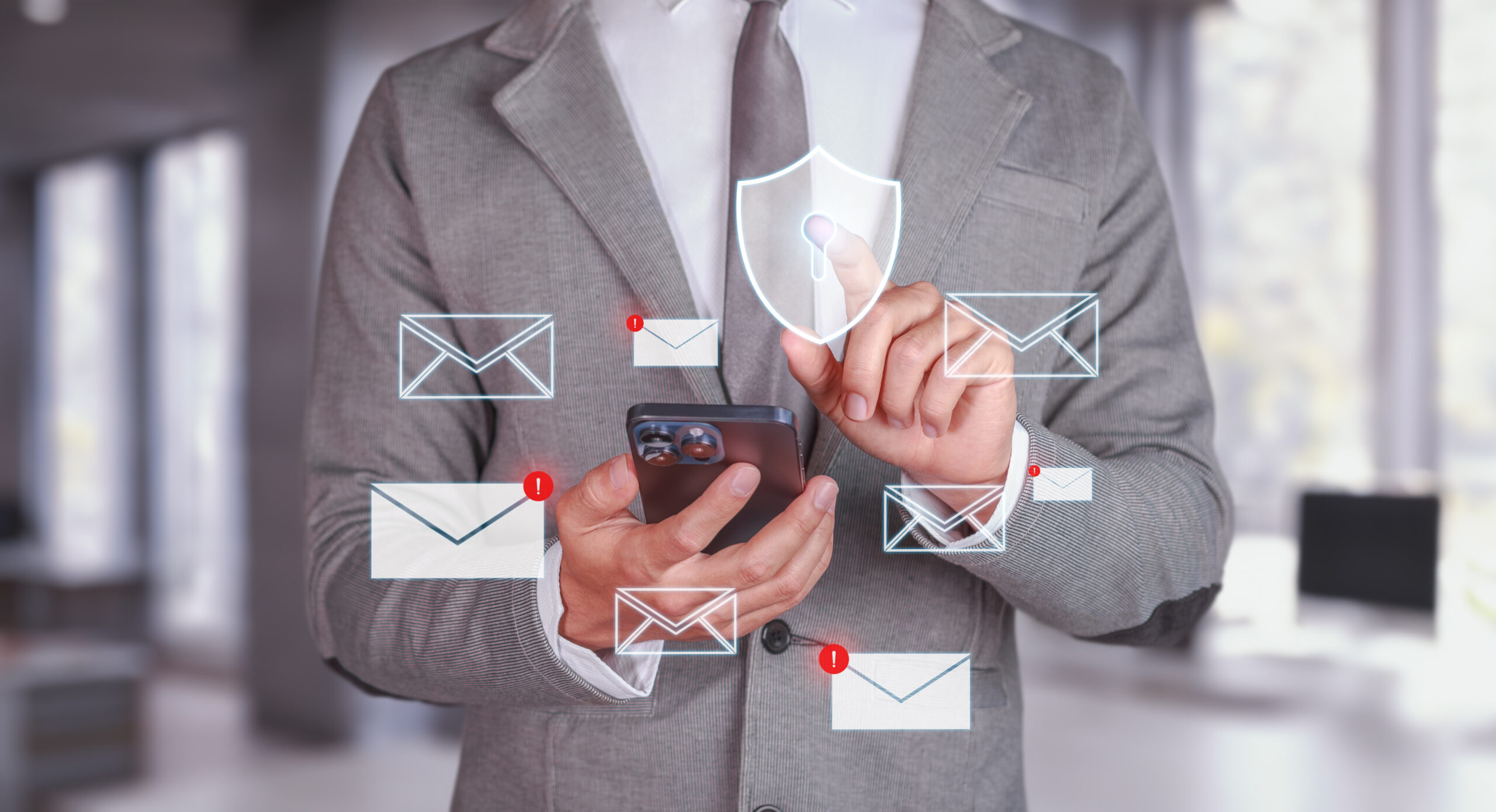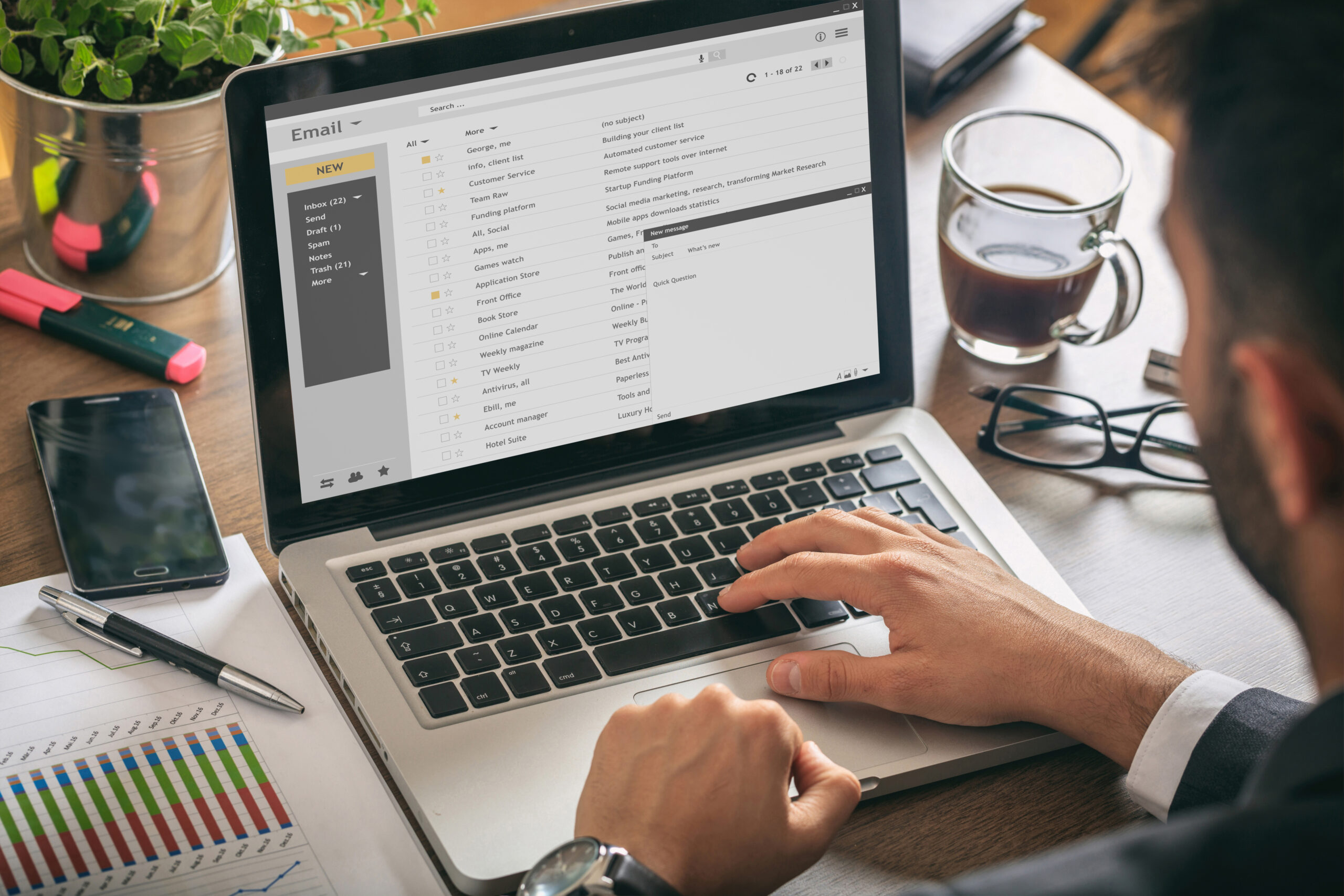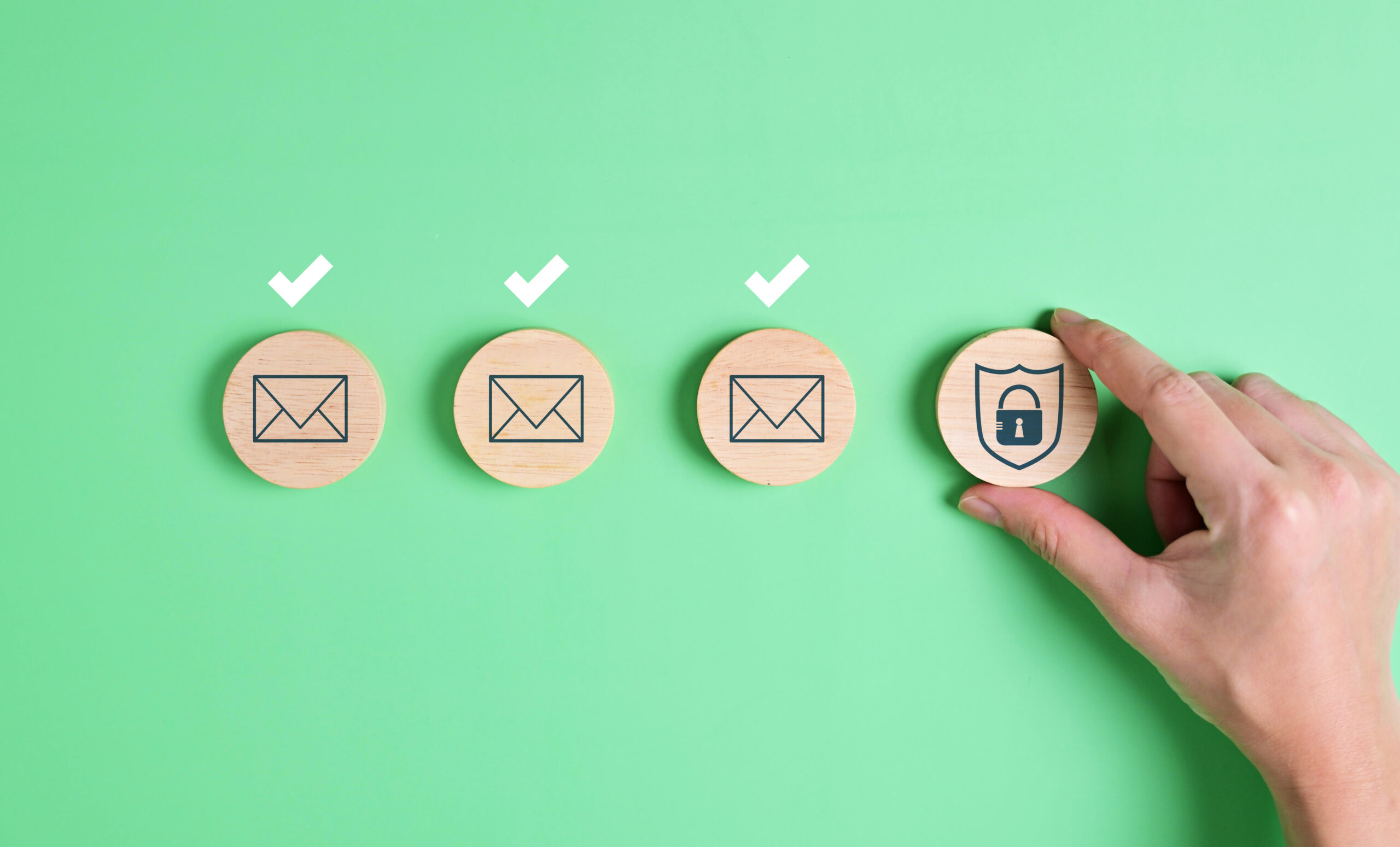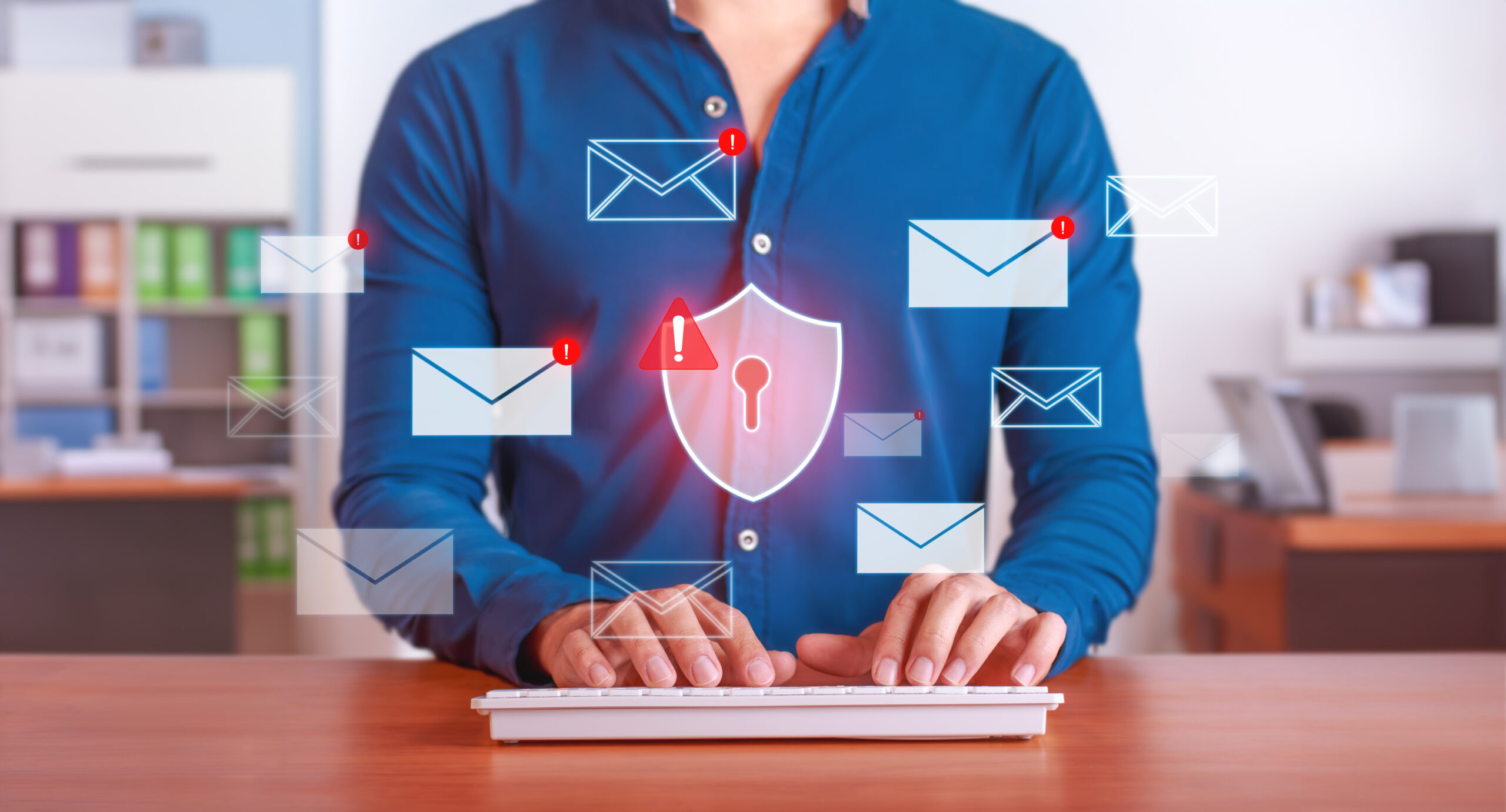Email Security
- Home
- Email Security
Email Security: Safeguard Your Organization from Email Threats
Email is one of the most common communication tools in today’s business environment, but it is also one of the most targeted entry points for cybercriminals. Without a robust Email Security solution, your organization is vulnerable to a wide range of threats, including phishing, malware, spam, and business email compromise (BEC). At ResoluteGuard, we provide comprehensive Email Security solutions with advanced AI capabilities that protect your organization from these evolving threats, ensuring safe and reliable communication for your team.
Learn How We Help 500+ Public Entities with Email Security:
What is Email Security?
Email Security refers to the tools, protocols, and strategies used to protect email communications from malicious attacks, unauthorized access, and data breaches. Our solution utilizes AI-powered threat detection, filtering out harmful content, authenticating legitimate senders, and defending against phishing attempts. This ensures your email environment is secure from the threats that can compromise sensitive information.



Key Benefits of Email Security
- Protect Against Phishing and Fraud: Email phishing is one of the most common ways cybercriminals gain access to sensitive data. Our AI-powered solution analyzes email content in real-time, detecting and blocking phishing emails before they reach your inbox, preventing fraud and protecting your organization from costly attacks.
- Defend Against Malware and Ransomware: Email is a prime target for malware and ransomware distribution. With AI-driven analysis, our security solution identifies malicious attachments and links, blocking these threats from entering your network before they can cause harm.
- Spam Filtering: Spam emails are not just a nuisance; they can also contain harmful links or attachments. Our AI-powered spam filter intelligently distinguishes between legitimate and malicious emails, ensuring only safe, relevant messages reach your inbox.
- Business Email Compromise (BEC) Protection: Business email compromise is a sophisticated attack that targets employees with access to financial or confidential information. Using AI-enhanced detection, our solution monitors for suspicious activity and impersonation attacks, providing you with an additional layer of protection against BEC.
- Data Loss Prevention (DLP): Protect sensitive data from being leaked through email. Our AI algorithms scan outbound messages to identify and block the sending of sensitive information, such as personally identifiable information (PII) or financial data, ensuring your organization remains compliant with data protection regulations.
- Email Encryption: Secure your emails with end-to-end encryption, ensuring that confidential information is protected from unauthorized access, both during transmission and at rest. The integration of AI enhances encryption protocols, providing dynamic and context-aware protection.
- Advanced Threat Detection and Reporting: Our AI-powered solution continuously analyzes email traffic and learns from emerging threats, automatically adapting to detect and neutralize new forms of attacks. Detailed reports allow you to understand and act on any suspicious activity.
Why Choose ResoluteGuard’s Email Security Solutions?
- AI-Powered Threat Intelligence: With the integration of AI, our solution provides real-time, adaptive defense against new and emerging email threats. AI algorithms continuously learn from new attack patterns and behaviors, improving the detection and mitigation of email-based threats.
- Comprehensive Protection Across All Email Platforms: Our solution integrates seamlessly with popular email platforms like Microsoft 365, Google Workspace, and more, ensuring that all incoming and outgoing email traffic is secured with AI-enhanced filters.
- Easy-to-Use Management Interface: We provide an intuitive dashboard that allows your team to manage security settings, monitor email traffic, and access detailed reports on threats and security incidents, all powered by AI for smarter, more efficient management.
- Real-Time Alerts: AI algorithms send real-time alerts to designated administrators whenever suspicious activity is detected, helping your team to respond immediately and mitigate potential threats.
- Automatic Updates and Patches: Our solution is always up-to-date with the latest AI-enhanced security features, protecting your organization from the most recent exploits and vulnerabilities in email systems.
- Expert Support and Consultation: Our team of email security experts, combined with the power of AI-driven insights, offers ongoing support, configuration, and strategic guidance to ensure your email security solution remains effective and tailored to your needs.




What Happens If You Don’t Have an Email Security Solution?
- Phishing Attacks: Without email security, your organization is vulnerable to phishing attacks, where malicious actors impersonate trusted contacts to steal sensitive data, credentials, or funds. AI helps detect sophisticated phishing attempts that traditional methods may miss.
- Malware and Ransomware Infections: Email remains one of the primary channels for distributing malware and ransomware. Without AI-powered filtering, malicious attachments and links can lead to data loss, system downtime, and costly ransom payments.
- Business Email Compromise (BEC): Cybercriminals can impersonate key employees to steal money or sensitive data. Without AI-driven monitoring for suspicious email activity, BEC attacks can go unnoticed until significant damage has been done.
- Data Breaches: Without data loss prevention protocols, sensitive information can be accidentally or maliciously sent outside the organization, leading to data breaches and compliance violations. AI algorithms add an additional layer of protection by proactively detecting potential breaches.
- Reputational Damage: Email security lapses can damage your reputation if customers or partners fall victim to a phishing scam or if sensitive information is leaked. Recovering trust can be a long and costly process.
- Compliance Violations: Many industries require that organizations secure email communications to meet compliance standards such as GDPR, HIPAA, and PCI-DSS. Failing to implement proper email security can result in legal and financial penalties.
How ResoluteGuard’s Email Security Works:
- AI-Enhanced Threat Detection: Our AI solution analyzes email content and metadata in real-time, identifying and blocking malicious emails based on known attack patterns and behaviors.
- Automatic Filtering and Blocking: Harmful emails—such as phishing attempts, malware-laden attachments, and spam—are automatically filtered and blocked by AI algorithms before they can reach your inbox.
- Real-Time Alerts: When potential threats are detected, our AI-powered system sends real-time alerts to designated administrators, enabling quick and effective response.
- Ongoing AI-Driven Monitoring: We continuously monitor your email traffic using advanced AI techniques, learning from new attack methods and adapting to detect and prevent the latest threats.
- Comprehensive Reporting: Access detailed reports generated by AI, providing insights into email traffic, blocked threats, and security incidents, helping you stay informed and make data-driven decisions.

Why Email Security is Critical for Public Entities
Sensitive Information
Emails often contain classified documents, citizen data, and inter-agency communications.
Compliance Requirements
Regulations like GDPR, HIPAA, and CJIS mandate strict email security protocols.
Phishing Attacks
Phishing is a common tactic to steal credentials, deploy malware, or impersonate officials.
Operational Continuity
Email disruptions can halt public services, impacting citizen trust.
Key Threats to Email Security
Phishing and Spear Phishing
Malicious emails crafted to deceive recipients into clicking harmful links or sharing sensitive data.
Business Email Compromise (BEC)
Attackers impersonate officials or executives to request fraudulent transactions or data.
Data Leakage
Accidental or intentional sharing of sensitive information via email.
Malware Delivery
Email attachments or links used to deploy ransomware, spyware, or viruses.
Spoofing and Domain Hijacking
Use of fake sender addresses or compromised domains to deceive recipients.
Man-in-the-Middle (MITM) Attacks
Interception of email communications during transmission.
Best Practices for Email Security in Public Entities
Implement Email Authentication Protocols
- SPF (Sender Policy Framework): Validates sending servers to prevent spoofing.
- DKIM (DomainKeys Identified Mail): Ensures email integrity by signing messages with a private key.
- DMARC (Domain-based Message Authentication, Reporting, and Conformance): Combines SPF and DKIM to protect against spoofing and phishing.
Deploy Advanced Threat Protection (ATP)
- Protects against advanced malware and zero-day exploits using:
- Sandboxing: Isolates and analyzes suspicious attachments or links.
- Behavioral Analysis: Identifies threats based on abnormal email activity.
Use Encryption for Email Communications
- Transport Layer Security (TLS):
- Encrypts emails in transit to protect against interception.
- End-to-End Encryption:
- Ensures only the sender and recipient can access email content.
Establish Email Filtering Systems
- Block spam, phishing attempts, and malicious attachments using:
- Spam Filters: Prevent unwanted emails from reaching inboxes.
- Content Filters: Detect and block emails with sensitive or harmful content.
Train Employees on Email Security
- Conduct regular training sessions covering:
- Identifying phishing emails.
- Avoiding suspicious links or attachments.
- Reporting potential email security incidents.
Enforce Multi-Factor Authentication (MFA)
- Add an extra layer of security to email accounts by requiring:
- Passwords combined with biometric, app-based, or SMS authentication.
Monitor and Analyze Email Traffic
- Use security tools to:
- Detect unusual patterns in email behavior (e.g., large data transfers).
- Identify compromised accounts or unauthorized access attempts.
Implement Data Loss Prevention (DLP)
- Prevent sensitive data from being shared via email:
- Identify and block emails containing sensitive keywords or attachments.
- Alert administrators to potential data leaks.
Create Email Backup and Archiving Policies
- Regularly back up email data to ensure recoverability in case of incidents.
- Use archiving solutions to comply with legal and regulatory requirements.
Test Incident Response Plans
- Simulate email-based attacks to:
- Evaluate the effectiveness of security measures.
- Train staff on response protocols.

Recommended Email Security Tools for Public Entities
- Microsoft Defender for Office 365: Protects against phishing, malware, and spoofing attacks.
- Mimecast: Offers email filtering, encryption, and continuity solutions.
- Proofpoint Email Protection: Focuses on advanced threat detection and data loss prevention.
- Barracuda Email Security Gateway: Provides spam filtering and malware protection.
- Google Workspace Security: Includes phishing protection, DLP, and compliance features for Gmail users.
Emerging Email Security Trends
- AI and Machine Learning: AI-driven tools can identify new phishing tactics and detect anomalous behavior faster.
- Zero Trust Email Security: Restricts access to email systems and validates every email's sender and content.
- Integrated Threat Intelligence: Provides real-time updates on emerging threats targeting email systems.
- Secure Email Gateways (SEGs): Advanced gateways act as a barrier between external emails and internal systems.
- Voice Phishing (Vishing) Protection: Combines email and phone-based phishing defenses to tackle blended attack methods.


Metrics to Measure Email Security Effectiveness
- Phishing Detection Rate: Percentage of phishing emails identified and blocked.
- False Positive Rate: Frequency of legitimate emails incorrectly flagged as threats.
- Incident Response Time: Time taken to detect and resolve email security incidents.
- Training Effectiveness: Employee performance in simulated phishing tests.
- Compliance Audit Success: Percentage of email security systems meeting regulatory requirements.
Advanced Email Security Strategies
- Adopt a Defense-in-Depth Approach: Combine multiple layers of protection, such as firewalls, intrusion detection systems, and endpoint security.
- Implement Role-Based Access Controls (RBAC): Limit email access and privileges based on employee roles to minimize exposure.
- Use Disposable Email Addresses: Generate temporary email addresses for one-time communications to reduce risks.
- Integrate with Security Information and Event Management (SIEM) Systems: Correlate email activity with other security events for a holistic view of threats.
- Employ Continuous Email Security Testing: Use automated tools to simulate phishing, spoofing, and malware delivery scenarios.


Incident Response for Email Security Breaches
- Detect: Monitor email systems for signs of compromise, such as unusual login locations or mass email sends.
- Contain: Isolate affected accounts or systems to prevent further spread.
- Investigate: Analyze the breach to identify its source and impacted data.
- Remediate: Reset passwords, apply patches, and strengthen affected systems.
- Recover: Restore email functionality and ensure data integrity.
- Review: Conduct a post-incident review to update security measures and prevent recurrence.
Adopt Zero Trust Email Security
Public entities can integrate Zero Trust principles into email security to ensure every interaction is verified and monitored.
- Continuous Authentication: Require ongoing validation of user identities, especially for sensitive email access.
- Dynamic Policies: Adjust email access based on factors such as device health, location, or time of day.
- Access Segmentation: Limit access to sensitive email threads or attachments to specific roles.

Get Started and Learn More Today

Email a Specialist
Speak with a ResoluteGuard specialist to learn how you can improve your cybersecurity posture.

Schedule a Demo
Learn in real-time how ResoluteGuard can provide cybersecurity protection.

Give Us a Call!
Can’t wait to speak with us? Give us a call directly to learn how we can improve your cybersecurity posture.
